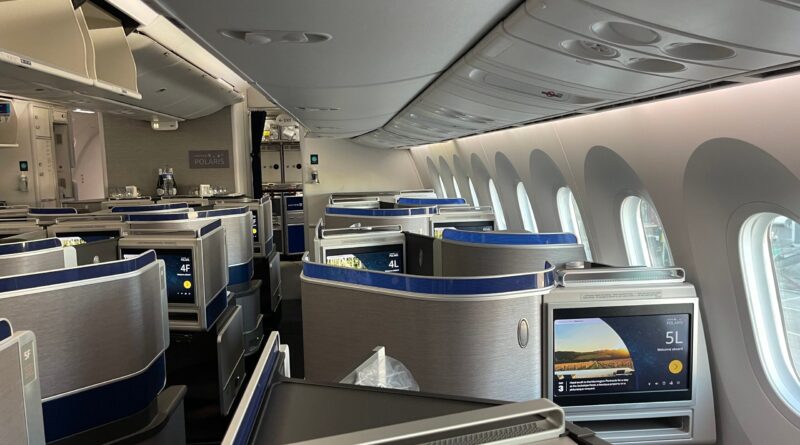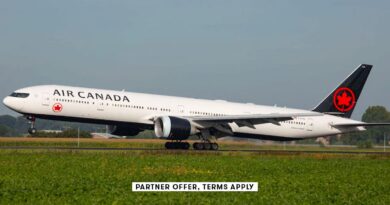How I’ve become the traveler I am today through points and miles – The Points Guy
For me, travel is about meeting people, being a lifelong learner and seeing the world through different perspectives.
Growing up as an only child in the San Francisco Bay area, my parents instilled in me a strong love for travel, taking me along on journeys to the Bahamas, Greece, Hawaii, New England and Spain, among other destinations. Our approach was fairly basic: Find the least expensive airline, book a cheap, clean hotel in a convenient location or snag the most affordable package on a cruise line we liked. Loyalty programs didn’t figure into the equation.
In the past several years, though, loyalty programs have become central to my strategy for travel. Here’s why, and what I learned along the way.
Going from casual traveler to a pro
When I was a kid, my parents’ careers allowed them to have the summers off, so we would often spend weeks, or even months on the road, which solidified my lifelong passion for travel. While we usually aimed to see as much as possible without going over our budget, we would also travel to see family.
As I helped plan one trip to New York City to see my cousin Chloe, who’s like an older sister to me, a light bulb went off. I could help my friends and family travel better by planning their trips by becoming a travel agent. Yes, at the age of 13, I became a travel agent with my mom’s help (she set up the agency and I planned the travel). Eventually, I saved up enough money to buy a car. But more importantly, I tried to learn as much as possible about airlines, hotels and cruises so that I could better help folks … and travel better myself.
I’m not saying everyone should start their own travel agency, but becoming a literal travel professional cemented how central travel would be to my life and my career.
As I learned the ropes, I started taking business trips to check out various hotels myself and I even earned United Airlines Premier 1K status in 2015 (a much easier task back then).
I started traveling to New York more frequently to see my cousin, thanks to the availability of one-way saver flights for 12,500 MileagePlus miles on most dates — and the ability to confirm a seat up front with Regional Premier Upgrades (since replaced with PlusPoints). These journeys made it clear just how important loyalty programs can be, not just for the perks you get, but for the travel opportunities that points and miles can open up.
My decision to attend American University in Washington, D.C. was heavily influenced by the opportunity to study international studies in the nation’s capital, but I won’t say that the fact that Washington Dulles International Airport (IAD) is a United hub didn’t play a role in my choice.

Daily Newsletter
Reward your inbox with the TPG Daily newsletter
Join over 700,000 readers for breaking news, in-depth guides and exclusive deals from TPG’s experts
Related: United’s best kept elite status secret: How to earn PQPs faster with partner flights
Learning about loyalty programs and earning millions of points
At this point, I still lacked the necessary credit history to open the premium transferable points credit cards TPG staffers love, so I remained fiercely loyal to United Airlines where I thought I could continue to earn the most miles, and I used that to my advantage.
Through United’s RewardsPlus partnership with Marriott, I attained Gold status in Marriott Rewards. When Marriott Bonvoy was established in 2018 after the integration with Starwood Preferred Guest, my Gold membership was upgraded to Platinum Elite Bonvoy status for a few months.
That’s when I added a hotel component to my points strategy. And I got a little crafty.
I utilized Marriott’s policy of earning points for up to three rooms on family gatherings. That way, I could rack up points on all our bookings and then use them for my family’s future travels. I also earned bonus points on contract group rates with 10 or more rooms through my travel agency. All of this helped me earn Marriott Bonvoy Ambassador Elite status.
Some of those points came in handy for a trip to India with my college girlfriend, where we could stay in various hotels for under 10,000 points per night, stretching our time on the ground even further. It was just another example of the ways that points can open up the world.
It was also a lesson for me about why it’s important to have a cohesive points strategy. Sure, you can concentrate on one airline or hotel program, but thinking through how to combine your efforts and amplify them through partnerships was transformational for me.
As was thinking creatively about how to rack up points across multiple programs.
Putting my earning into overdrive
Shortly after returning from India, the COVID-19 pandemic forced college students out of the dorms. Like many others, I had to transition to remote classes, but I missed the engagement of in-person classes and being around friends. However, the university dorms remained closed, and apartment leases with 12-month contracts were not viable for me or many other students given the uncertainty of the pandemic.
Instead, I hatched a plan to negotiate preferential rates for students across the country at extended-stay hotels, and I received points and commissions for the bookings.
When my student housing project concluded, I had established business partnerships with 21 Marriott, Hilton and Hyatt properties, referring a total of 450 students and earning 4 million Hilton points (worth $24,000 at TPG’s valuations), 5 million Marriott points (worth $42,000) and 1 million Hyatt points (worth $17,000).
I now had 10 million points across three major loyalty programs: Marriott Bonvoy, Hilton Honors and World of Hyatt and had achieved the ultimate elite-status trifecta: Marriott Ambassador Elite, Hilton Honors Diamond and Hyatt Globalist status.
But as points-rich as I was, I know that loyalty programs can change at any time, so I shifted my focus once again to a strategy that we recommend on a daily basis to TPG’s readers: diversifying into transferable points.
Related: 6 reasons I love my World of Hyatt Card and plan to keep it for the long term
Turning to transferable points
When I joined TPG in January 2022, I had all those hotel points to use to explore the world with friends, and I have spent the past two years doing just that. But those travels have also taught me that transferable points are the ultimate currency for getting value from your travel and loyalty instead of funneling all your points into a single airline or hotel program. Doing that can overexpose your balances to the impact of devaluations.
1 of 3
KYLE OLSEN/THE POINTS GUY
For example, earlier this year, United Airlines increased award rates by up to 122% without notice, and Alaska Airlines increased Japan Airlines award rates by up to 100% (also without notice).
Transferable rewards offer more diversification and flexibility when it comes to affordable travel. With Chase Ultimate Rewards points, for instance, you can transfer points to multiple partner airlines and hotel programs at your discretion, picking the one offering the best redemption rates for a particular trip. You can also redeem those points directly through Chase Travel at a rate of 1-1.5 cents per point, depending on which card you have.
All that flexibility means you can stretch your points even further for the trips you want rather than relying on award availability with one frequent-flyer or hotel program, and being subject to any changes they might make to redemptions.
Not being afraid to test out new loyalty programs
After watching United make negative changes to its MileagePlus program for years, I decided to switch my loyalty to American Airlines to test out how well I could maximize AAdvantage status. I was able not only to earn top-tier Executive Platinum status with American Airlines and valuable benefits like systemwide upgrades, but I also appreciated inexpensive award tickets I could book thanks to AAdvantage’s dynamic pricing, such as redeeming just 6,000 AAdvantage miles for a one-way flight from Hollywood Burbank Airport (BUR) to Boston Logan International Airport (BOS) via Phoenix Sky Harbor International Airport (PHX) that otherwise would have cost $300.
1 of 2
An example of getting over 5 cents per AAdvantage mile through dynamic pricing. AA.COM
However, I likely won’t be able to retain Executive Platinum, so my new strategy involves qualifying for United Premier Gold and AAdvantage Platinum Pro. This way, I can accumulate miles from both airlines, enjoy decent status perks on multiple airlines and continue using transferable point credit cards for my expenses.
This is what I always recommend for readers: prioritizing redeemable miles above elite status. While status can be a nice perk, redeemable miles provide a route to award travel, which should remain travelers’ goal.
On the hotel side, I’ve been disappointed by the limited incremental benefits at the Marriott Ambassador Elite level, so I’ve started focusing on attaining Hyatt Globalist status. This will come with exceptional elite breakfasts, waived resort fees on eligible rates and complimentary parking on award stays.
The other reason I’m focused on World of Hyatt is that it remains the only major hotel chain with published award charts rather than dynamic pricing, and there is still tremendous value to be had from redemptions across its various categories.
Related: Here’s why the Venture X and Amex Gold are the only 2 cards in my wallet
Bottom line: Keep learning and growing
1 of 2
A recent review of the Delta Airbus A321neo. KYLE OLSEN/THE POINTS GUY
Travel has played a pivotal role in shaping my life. It has given me a unique perspective on the world through continuous learning opportunities. None of this would have been possible without points or miles, which have also provided me with the opportunity to continue learning and growing, both as a traveler and a person.
And while I’ve already learned a lot about loyalty programs in the decade or so that I’ve been intrigued by them, there’s still so much more to know … and more travel opportunities that I’m sure they’ll open up.
Related reading:




